|
I have put together a brand new presentation for 2021. I am looking forward to debuting this presentation for the first time next Thursday. This will mark my first in-person presentation in almost two years and I am very excited about that! Stripers are one of the most popular game fish to catch on the planet. I have spent a good portion of my adult life pursuing this great fly fishing quarry. During my "Seven Stripes, the who, what, where, when, why and how of to catch Striper on the fly" presentation we will discuss all aspects of catching Stripers on the fly, from what or who the fish are, to how and where to catch them. If you are a striper junkie like me, then you will not want to miss this presentation! The first chance to catch this presentation will be at the October Delaware Valley Fly Fishers meeting. The DVFF meeting will be Thursday, October 14th, at 7:00 PM, at the Churchville Nature Center, located at 501 Churchville Lane, Churchville, PA. Click HERE for directions. I will start the presentation shortly after the end of the club business. There will be something for every type of fly fisher in this presentation, from the first-year rookie to the seasoned jetty rat. This event is open to the public, with a nominal entry fee for non-club members. This promises to be a great evening; we hope to see you next Thursday night. If you have any questions please feel free to contact us, if not we look forward to seeing some of our Norvise tyers attending this great event. Till next time...
Tight lines - Tim Tonight we look at our ambassador Braden Miller. When you look at all he has accomplished it is easy to forget he is still only 15 years old. We are so fortunate to have Braden on our staff. He (and his entire family) are now family to us. I love this kid like he is my own son and Tyler calls him "the little brother I never had". For a bit of a deeper look into what makes this fine young man who he is read on... By Tim O'NeillAny one who knows me knows that Smallmouth Bass are my favorite fish to chase with fly gear. Oh yeah, if it is Steelhead season I will say Steelhead are my favorite, when we are Pike fishing I will say Pike are my favorite, when the Shad are running I will say...well, you get the picture. I have been quoted many times saying "Pound for pound a Smallmouth is the hardest fighting freshwater fish" I believe that to be true. I have also been quotes ad saying "Once you catch a truly big Smallmouth you will kick a stone at all of your Trout gear". I believe that to be true, hence the title of this article. For us, typically the end of March into April has always been the Trout time of year. It is just what we did year after year for as long as I can remember, this would take us to the Smallmouth spawn, usually around the first week or two in June. We would start our Smallmouth Fishing after the spawn and fish them through the summer. Well, a few years ago our friend Brian Shumaker of Susquehanna River Guides (the premiere smallmouth guide service on the Susky) introduced us to pre-spawn Smallmouth bass fishing, and he ruined us forever!!!! For us the pre-spawn typically starts around the last week in March and can carry deep into May with the month of April being the prime time. This is all temperature driven so you need to watch your waterways closely and when that water hits around 45 degrees you need to hit the water. We are typically looking for "river run" fish meaning fish that come out of the river into one of the smaller tributaries to spawn. Resident fish can grow to a large size in this area, this time of year we are looking for the migrators fresh in from the big river, hungry, hormonal, and MAD. Man, I love these fish! Some of the smaller tributaries can be hard too access and tough to navigate once you get on the water. Our favorite pre-spawn river is no exception. Our Smith Fly Big Shoals was tailor maid for this type of fishing. Light to carry and easy in and out of the water, you can bounce this thing off every rock in the river and it keeps on trucking. Low and slow if the key during this time of year, intermediate and heavy sinking lines are the norm and you can leave your floating line and popper box at home. Don't get me wrong, I love coaxing bass to the surface and I love the visual of the popper bite. There will be plenty of time for that in a few months, just not now. Short leaders of 12 to 15#, sinking lines and big baitfish patterns are your go to for early season Bassin, favorite patterns include Feather Game Changers, Deceivers, Clouser's and Half and Half's are all great choices. I have long believed white to be the most productive Smallmouth color and the early season choice remains the same. To throw all that payload you need a serious stick. We have been relying on the Axiom II X and the LK Legacy from Temple Fork Outfitters. These rods have the juice to launch a heavy sink tip and the backbone to land an angry 20" Bronzeback. We have been very happy with everything TFO since joining their team. On this particular day we spent about 6 hours floating a productive section of the river. Cast, upstream mend, count the fly down, strip, strip, pause. We spend as much time on the anchor as we did on the sticks setting up on the likely fish holding water and drifting over the other. Cast, upstream mend, count the fly down, strip, strip, pause. Most of the time that pause id the most important aspect of the cast, a truly bid Smallmouth will usually hit on the drop, probably the reason the Clouser minnow and it hundreds of variations are so effective. When we were driving home, tired, gear stowed and boat in tow I was thinking; "This was the single beast day I have had on a Smallmouth river. Never before had we landed three 20" fish, 5 18" fish and I don't know how many 14, 15 & 16" fish. Truly an epic day on the water (and I really do not like the word epic) but that is the only way to describe it. So, like the title says Smallmouth...in April??? Absolutely! Man, I LOVE these fish! Till next time...
Tight Lines - Tim By Tim O'NeillThe spring Shad run can be one of the most prolific fisheries of the spring, it can also be one of the most overlooked. Starting at around mid-April our rivers and tributaries will fill with these migrating fish as they start their yearly pilgrimage to span and repeat the circle of life. A quick circle it is as the entire spawn lasts around 6 weeks. If it is past the third week of May and I have 2 subpar outings, a sub-par outing is less than 30 fish, it is time to move on to Smallmouth. What is a good outing you may ask… on a year with a strong migration, when targeting hickories, triple digit catch numbers is the goal, and an attainable goal it is. There are over 30 different species of Shad, all members of the Herring family. The two most popular and the ones we target with fly gear are the American and the Hickory Shad. The crown jewel of the Shad family is the American Shad. These fish start their migration a little later in the year, they are usually in my home waters of Northern Delaware around Mother’s Day. A 4-to-6-pound average fish with a deep forked tail and shaped like a bullet, these fish will give a stout 8 weight a solid workout. The smaller cousin to the American is the Hickory shad. At a 1-to-3-pound average, what they lack in size they make up for in numbers and tenacity, they aren’t nicknamed “Poor man’s Tarpon for nothing”. At the time of hook expect to feel several violent head shakes followed by the ole’ “airborne ranger” as these fish usually come out of the water at least one time during the time you are trying to land them. The gear we use to chase these fish is pretty simple as are the techniques we use to catch them. We mentioned Smallmouth earlier, with the exception of flies, all the gear you use for Smallmouth will fit into the Shad fishing arenas quite nicely. For Hickories 5 to 7 weight single handed rods are ideal. Early in the season we may be dealing with high, fast moving water. Weighted flies and heavy sink tips could be the norm. Do your shoulder a favor and take a 7 (or possibly an 8 weight) when hucking the “chuck and duck” rig. Later in the season, when the water flows are considerably lower a 5 weight with an intermediate sink tip is ideal. In 20 years of chasing both Americans and Hickories I don’t believe I have ever used a floating line and I am not sure I have a need for one. Beings we are typically using a form of a sinking line leader construction is pretty simple. I will typically build a short, 3-to-4-foot, leader out of Fluorocarbon consisting of two feet of 12 to 15# blood knotted to a 1.5-to-2-foot piece of 1 or 2X. If you enjoy throwing 2 handed rods these new Micro Spey rods were tailor made for these fish, especially the smaller Hickories. Smaller two handers in the 3 to 5 weight range are a joy to cast all day (you do A LOT of casting during a day of Shad fishing) and the smaller, Micro Spey’s let you “feel” the fish very well. Fishing techniques are very simple, typically we will implore the wet fly swing. Position yourself up river of a spot of deeper holding water, cast down and across river, put a large upstream mend into the cast and let the flies settle in and hunt. Keep the line tight and follow the rig with the rod tip as it swings through the run. Don’t forget the dangle. At the end of the swing let the fly hang in the current for a bit. You will be surprised when a Shad comes up, whacks the fly and almost takes the rod out of your hands! Remember, these are migrating fish, you want to find your spot, stake your claim and stay there as long as you can. If the fishing slows a bit just be patient, the pod you were fishing over has probably moved up river above you. Rest assured, there will be another pod coming along shortly. Also, don’t be afraid to change fly colors. Even if it is the same pattern in a different color, sometimes a color can go “stale” and the fish will stop engaging it. A quick fly change and you are right back in the game catching again. Speaking of flies…just like everything with Shad fishing Shad flies are pretty simple. Small Buggers say size 8 in bright colors are fantastic choices. Hair wing bucktails are another great choice, the tried-and-true Mickey Finn could possibly be the perfect shad fly. Small Clouser Minnows have brought plenty of shad to hand. Having been a Shad a holic for many years you can bet we have designed some of our own patterns. O’Neill’s Shad Crack is our number one pattern. You can see this fly being tied on this month’s beginner fly tying video series. Other favorites we will be showing are O’Neill’s Hazardous waste, and O’Neill’s Dart. Black will sometimes be a good producer, other productive color combos include Chartreuse & Red, White & Pink, Orange & Silver, Yellow and Orange, and my all-time favorite Bubblegum pink & electric blue. Mid-April is a great time to get out and shake off the winter shack nasties. It is also a great time to get your distance cast tuned in after spending an entire winter of flipping a nymph rig up river and watching it float past. I call Shad the perfect fish at the perfect time of year. Hopefully this year you can get out there and chase them with us! Till Next time...
Tight Lines - Tim By Braden MillerThursday, after 8 days in Emerald Isle Albie fishing, spending time on the beach with my family, wearing board shorts and flip flops we made the four hour drive home to meet Tim at my house. Mom and I were home for a hour and a half, just enough time to unpack the trucks, switch some clothes into another bag and we got back in the truck to head to Sylva, NC for the Tuckaseegee Fly Shop’s Norvise Demo Day at their Sylva location. Our 6 hour drive ended up being close to 8 hours due to accidents and all lanes closed for a bit. Friday morning we woke up to temps in the 40’s so we traded our board shorts and flip flops for jeans, sweatshirts and shoes! Mom, Tim and I got some breakfast before we headed to the shop to set up our vises for Demo Day on Saturday before we heading to the river with Shannon “Big Mess” Messer (I loved how he answered the phone Tuck Fly Shop, Big Mess speaking can I help you?). We all got our waders on (even Mom) and headed out to do some Euro Nymphing, which I had not done before.Tim and I both were using the Temple Fork Outfitters Drift Rod. After a quick Euro Nymphing lesson and some tips from our amazing guide, Big Mess, Tim quickly caught his first wild rainbow of the day and I wasn’t far behind him. After fighting Albies in the Atlantic Ocean for a week, I set the hook rather strongly and launched two poor little rainbows right out of the water. Luckily for both the fish and myself they stayed on the hook and landed back in the water. We fished several sections of the river and probably caught 25 or so wild rainbows and Tim landed one wild brown. We caught a bunch of beautiful small rainbows, a handful of decent sized rainbows and I caught a rather chunky fellow. Shannon recommended we have dinner at really good BBQ restaurant called Haystack Smokehouse. Man was that some good food; from the Brunswick Stew, to the pulled pork, brisket, andouille sausage and especially the Banana Pudding. I can personally say we will never go to Sylva and not eat at the Haystack Smokehouse (man now, I wish I could eat dinner there tonight). It was an early night for the three of us so we could be ready for Demo Day Saturday. Brr, Saturday morning was even colder than Friday! This was the first morning this year I have seen frost on our truck. We arrived at the shop around 7:45 to make sure we were ready when the store opened and so Tim could record his episode for the shop’s *podcast called, Tuck Cast, With A Splash of Bourbon, with Shannon “Big Mess” Messer, Bobby the Bearded Wonder and Coach Dale Diesel Collins. Tim and the guys talked about the story/history of Norvise and what makes it so unique. They dove into Tim's relationship with the late Norm Norlander and what it takes to produce the Norvise Fly Tying System. Saturday was Big Mess’s 50th birthday and Tim’s 49th birthday. Once the shop opened there was a steady flow of customers throughout the day. We meet some current Norvise owners that came to visit for Demo Day. Some upgraded their vise or added a new Auto Bobbin or two to their collection. There were some who came to the shop to check out exactly what the Norvise was capable of and some came with intentions of joining the many other Norvise tiers. Tim gave his normal show demo for a group of people, he challenged several to take his bet could he tie a wooly bugger in under 60 seconds? If you have never seen him in person at a show, Tim bets someone that if he can tie a wooly bugger in under 60 seconds then they have to purchase a full set up and if he fails, he will give them a full set up. I have been going to shows with Tim for two and a half years now and I have never seen him lose… not too many people ever take the bet. I spent my day tying game changers and a baitfish or two. Every time I finished tying a new game changer, someone would buy it from me. I know selling flies is what a tier strives for, but for those of you who know me, whenever I tie a new fly, especially a game changer, I form this sort of attachment to each one of them. I am very thankful to those who loved the flies I tied Saturday so much, they wanted to fish with them. I look forward to seeing what they catch. Mom, Tim and I all had a wonderful day at Tuckaseegee Fly Shop for their Norvise Demo Day. We look forward to returning to Sylva soon to visit the shop again, see all they guys and Norvise fans, and of course to do some more fishing in the trout capital of North Carolina. Thank you to everyone who came out to the Norvise Demo Day to see Mr. Tim and I, and for checking out what makes the Norvise the most innovative fly tying system on the market today. If you are ever in Sylva or Bryson City, North Carolina you have to remember to stop in one of Tuckaseegee Fly Shop and say hello. Till next time...
Tight lines - Tim This week's blog post comes to us from Norvise ambassador Mike Corrigan. Mike spent some time chasing the fish of 10,000 casts during the pandemic and he shares his experience here. This is a timely post as we just put up his video "Mike Corrigan ties the Comet Minnow" on our YouTube page. You can see the video by clicking HERE If you have not already you may want to subscribe to the new Norvise YouTube channel. we are posting 2 videos per week, this is a great resource for learning new techniques on the Norvise. Since landing my first Musky a few years ago, I have been addicted to the maddening follows and the mayhem that ensues if the fish do commit. When able to spend a day on the water pursuing Muskies, I generally define success simply by the number of “follows”. Fish or no fish it is a day well spent just to be able to entice these predators. Interestingly, the smaller lakes that do have Musky here locally are generally devoid of other fly rod species; there are Musky and there is bait! A year ago I decided to hire a guide and get serious about chasing Musky. Where I am living in central Canada there are a lot of Musky, but no guides that cater to fly anglers. As a former guide, all I was looking for was someone with the knowledge of the water and the habits of the fish. The lake the guide selected was absolutely perfect for fly fishing, it is a long narrow lake with lots of bays and as it turned out an abundance of fish; both Musky and Tiger Musky. Much to the guides surprise, we did very well that day, well enough for me to plan a trip back in 2020. Over this past winter, with last years trip in mind, I contacted some buddies in at my local fly fishing club (Manitoba Fly Fishers Association) and it was very easy to fill the 5 other spots. The plan was to stay at a drive to lodge a few hours away, in the heart of Musky country, and give it a go. Four of the 5 others had never cast a fly to a Musky let alone seen one in person. With expectations tempered for the “fish of ten thousand casts”, and warnings from the lodge owners that Musky on a fly was a tough go, we hatched a plan. Fly fishers, it seems, are certainly the eternal optimists. Between that December 2019 fishing pact with the group and the whole world being turned upside down with the COVID issue things were touch and go. The trip was on then off then back on, then delayed. Our assigned week was moved 3 weeks past the season opener, but we did have the plan finally come together with the original 6. The 4 newbies hired the guide I had used the previous year for a day; splitting the morning and afternoon session so all had a chance to learn the way of the Musky. The fly patterns we used were small compared to the ones that are touted as a requirement to catch Musky. The fly I refer to as my “Goldfish” accounted for my 40” and 41” fish plus numerous other smaller ones. We didn’t throw flies any longer than about 5”. The Musky were also keyed into top water and large 1” square poppers did the trick. As an aside, I do fish Musky from a pontoon boat on some of the smaller local lakes. I have observed, on several occasions, that during the Hexigenia hatch the Musky will slurp these easy prey like a Trout. So, it is not all about the top predator only eating baitfish. Apparently, Musky like to change up their food source as well. For the duration of the trip we all fished barbless hooks. It is not a local requirement but it is just the way we fish. Most of the Musky we landed did not require any hook removal whatsoever. With their nasty sets of teeth we reasoned that they bite down on the fly and their teeth get tangled in the material that we dressed the fly with. Once they feel the net they seemed to open their mouths and the fly “self-released”. One morning we had a rain delay and I went through leader building with the Knot2Kinky wire. It is amazing stuff to use once you get comfortable with the knots. As most anglers know a normal store bought leader would be good for one toothy fish and then it is finished. During the week we noticed some rather odd Musky behavior. We had several fish put their noses literally on the gas motor as we were using the electric to maneuver the boat along the shoreline. We also had a 40” plus fish follow us along the side of the boat (within a rod length) for several hundred feet of shoreline; we literally cast over its head into the likely holding water. It seemed they may be programmed that a release of a tired Walleye might happen? For most of the week we would follow up a cast with a large oval pattern with the rod tip, often seeing Musky appear from the depths. We would drop the rod tip well within the water column, so the fly would have a downward movement followed by raising the rod tip and subsequent ascent of the fly. This technique would end up producing several fish including my largest. Figure 8’s aren’t impossible with a fly, but they are more difficult. The week really was one for the memory banks and it was a trip of a lifetime for most. We have plans for 2021 already in place and we may do some exploring to some neighbouring lakes as well. Like I say this part of Canada is Musky Central and there are lakes available with the 50” plus brutes, but I am still “baby stepping” my way up to them after landing some of the hawgs on this trip.
Mike Corrigan Braden was recently asked to do a blog post for Fly Lords Magazine. This is a really good look into a side of Braden many people don't normally see. Personally, we are so fortunate to call the Millers family, that we sometimes forget how hard he works to continue to do the things he loves. You continue to impress us my friend, keep up the fine work you are doing. To get a look a bit deeper into the life if Braden Miller, click the image below. Till next time...
Tight lines - Tim Well, the crew made the 6 hour trek west again this year to chase what has become one of my favorite fish, the Northern Pike. This marks the second year we have done this trip and I am sure it won’t be the last. I mean, what is not to like about big, aggressive, toothy fish? I just love this type of fishing! We left Delaware Friday afternoon, we fished Saturday and Sunday and we made the easy drive east on the PA turnpike home early Monday morning. We were all tired, worn out and sore, it was 100% worth it! If you have never taken a Pike on the fly I would suggest you do it ASAP. This is a very visual fishery with big flies, big fish sometimes at very close quarters. The take is incredible, to the point it can actually frighten you when it happens. I just love every part of it. We are typically fishing out of drift rafts and the Smith Fly boats are perfect for this type of fishery. The lack of proper boat ramps along the river makes having a portable, light weight boat a must. It would be very hard, almost impossible to fish a hard hull here. We like the Smith Fly rafts so much we brought a “great Big Shoals” 15 footer home with us! 9 weight rods are the norm with an intermediate shooting head line. We opted for a variety of Temple Fork Outfitters rods including the Mangrove, Axiom 2 and the new A2X rods all paired with BVK and BVK 3 reels. Lines were Rio’s Outbound Short intermediate heads with floating running lines. If you have ever looked into the mouth of a big Northern you will see rows and rows of large, sharp teeth. Wire bite tippet is not a suggestion it is a must! Leaders were fairly simple, 30# mono, 20# mono and a section of 30 pound knotable wire. The entire leader system is less than 3 feet long. The flies we used were pretty diverse. We threw Game Changers (several varieties) bulkhead hollow flies, double deceivers and Pat Cohen’s Man Bear Pig. On the ride home Ed said “that Man Bear Pig May be the perfect fly for this type of fishing”. One thing is for sure. What ever fly you use make sure it has a sturdy, sharp, heavy gage hook, these fish are no joke. And they will absolutely destroy a poorly tied fly with a cheap hook! The fishing is pretty simple for these fish. Pound the banks as much as you can and strip, strip, pause. Josh, one of our guides said they get probably 80% of their pike eats on the pause. One thing I will say is you have get the fly in the kitchen, possibly on the dinner plate, and Pike live in some nasty places. You can’t be afraid to put your fly in harms way. Snags, both in and above the water are the norm, know that going in. The first day we spent almost 10 hours in the boat. Pounding the banks and stripping the fly all the way back to the boat translated into a lot of casting...a lot. We were very thankful for the light swing weight of TFO’s Axiom rod series. Throwing a 9 weight for 10 hours can be tough. The Axiom 9 weights could be cast all day with no issue. Pike fishing is a numbers game, with a “moved” fish almost as exciting as a landed fish (almost) in 2 days of fishing two boats, each with 2 anglers moved close to 60 fish landing 17. Size ranged from a few hammer handles to a 36 inch tank. Not quite the fish of 10,000 casts like their bigger cousin the Musky, but not like shooting fish in barrel ether. Wile they are aggressive and once they commit they are all in, they certainly are not stupid. Good accurate casts and a varied, erratic retrieve were a must. I can’t tell you haw many times Josh would say “put some pauses in there” I am glad he did because when that fly stopped and kicked sideways… Till next time,
Tight Lines – Tim Every year during the change of the seasons several things happen. Snow melts, Daffodils bloom, trees leaf and the Dogwoods bloom. It seems the blooming of the Dogwoods symbolize many things in the outdoors. Any central Pennsylvania Trout worth his salt will tell you that is the time for the Grannom Caddis. Well, if you are from my area in Northern Delaware the Dogwood bloom means one thing…Shad! Shad are a member of the Herring family and every year around the third week in April they descend on our tributaries in droves. Fresh from the ocean and looking to spawn they are strong, feisty and tailor made to be taken on the fly. The “run” can vary in length (time) and intensity. During strong runs several fish per hour is the norm and a triple digit count on a morning or evening outing is an attainable goal. Yes, it is fair to say I do love the Shad run. Shad fishing is actually pretty simple, a five, six or seven, weight rod, a intermediate or type II sink tip line and a small selection of flies will cover it. We will cast across river, almost at a 90 deg angle, let the fly sink and they twitch it as the current swings the rig down river, below where we are standing. If you choose you can let the fly dangle downstream, if you can wait long enough a fish will come up and take it, I will usually pick it up and re-cast. Flies are fairly simple, anything bright and flashy will do, I do have several of my own designs specifically for Shad, honestly a chartreuse bigger or the venerable ole’ Mickey Finn would fill the bill just fine. Note, to see me tie a few of these patterns visit our new YouTube page by clicking HERE feel free to click subscribe when you are there. For this outing we were fishing some new TFO gear. I had my TFO A2X 9 foot 5 weight. I have been using this rod to throw streamers to Trout on some local rivers, this shad run was the specific reason I got this set up. I was throwing an intermediate shooting head with a short (1.5 foot) T8 sink tip. Tyler was fishing the Drift rod set up as a Micro Spey. Two handed casting with a 2, 3, or four weight Micro Spey set up is fantastic fun on the Shad river. We were into fish form basically the first cast, I don’t know how many we landed, we estimated about 150 between the 2 of us. It was a fantastic day on the water. The Shad run is something special that happens each year. Some better than others, some are epic. One thing is for sure, these fish are a ton of fun!
If you would like to learn more about this great fishery book my "Shad Fishing 101" presentation for your club or private group. It is full o tons of information to chase these strong, hard fighting fish. Till next time... Tight Lines , Tim |
Archives
June 2024
Categories
All
|


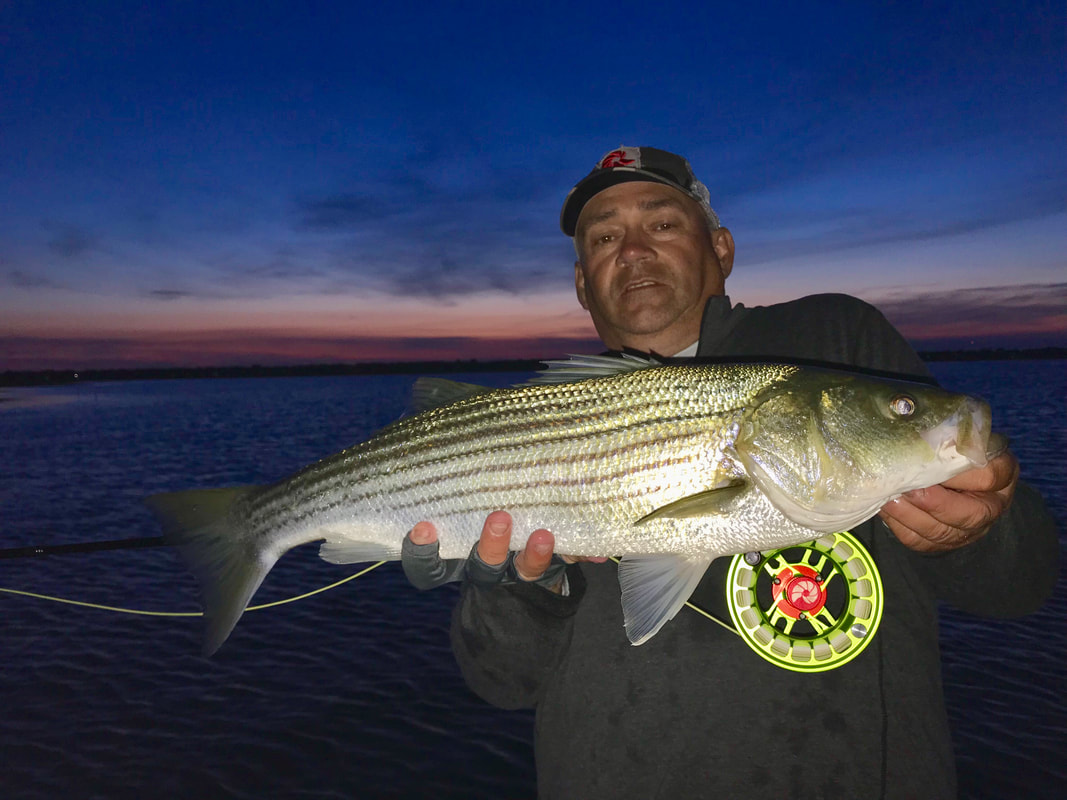








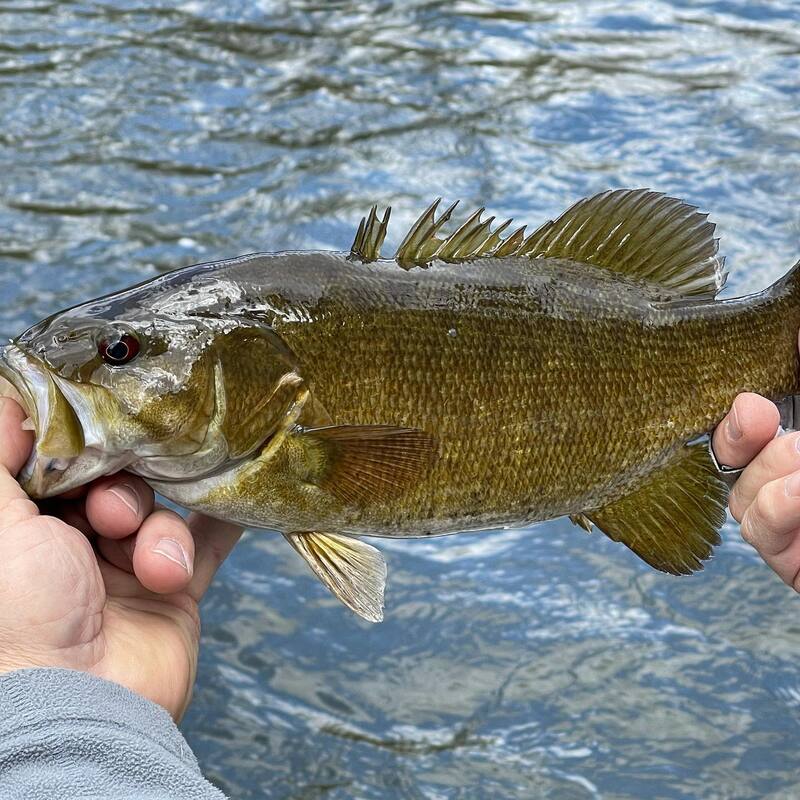



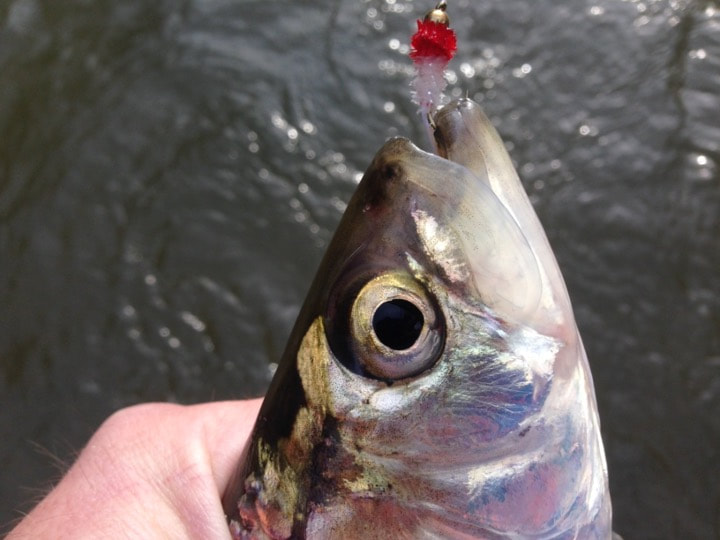


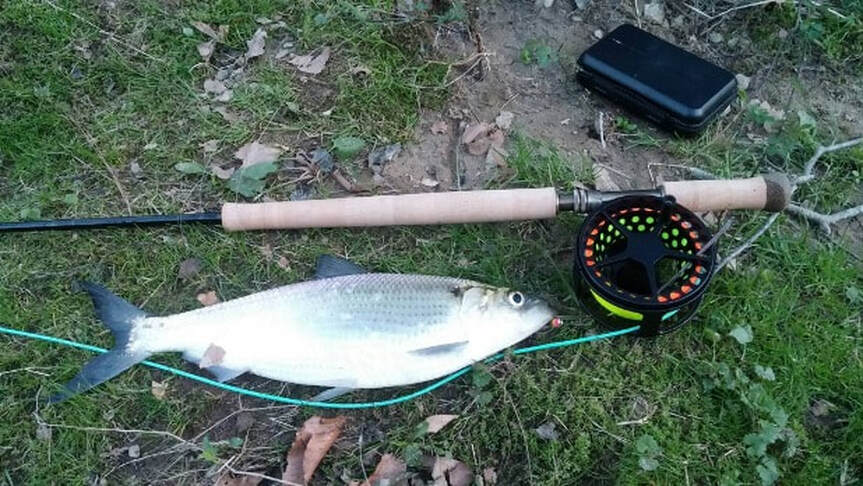
















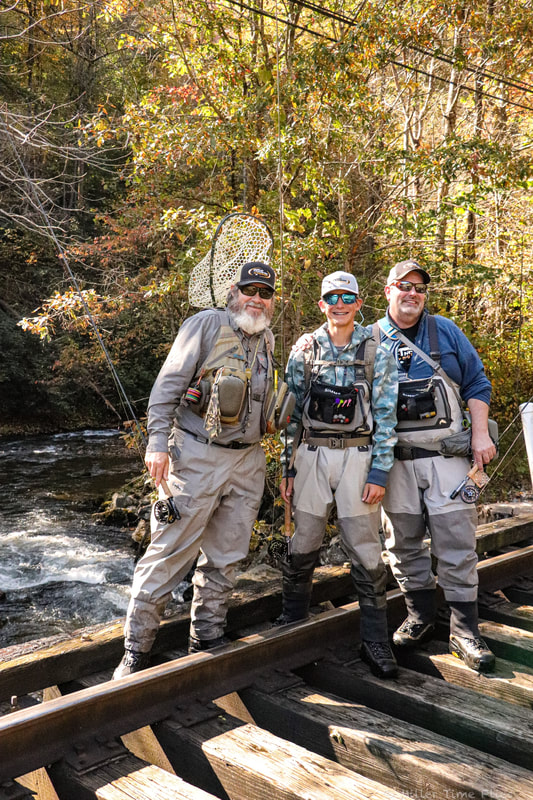





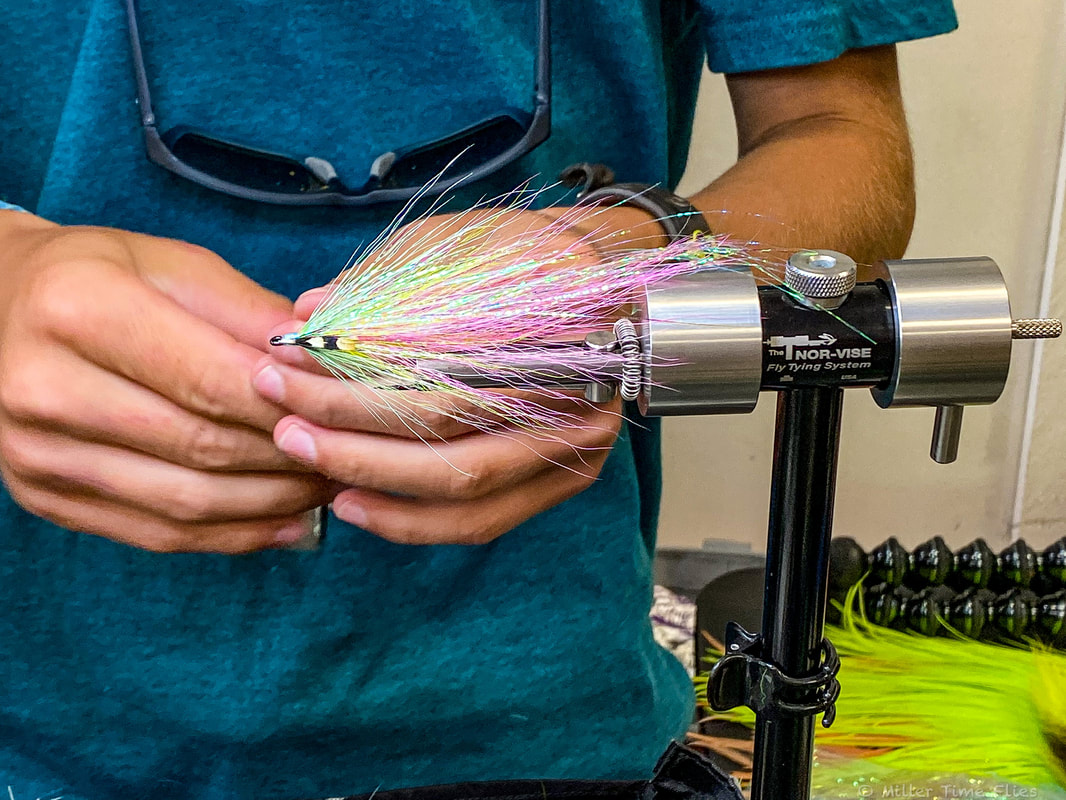
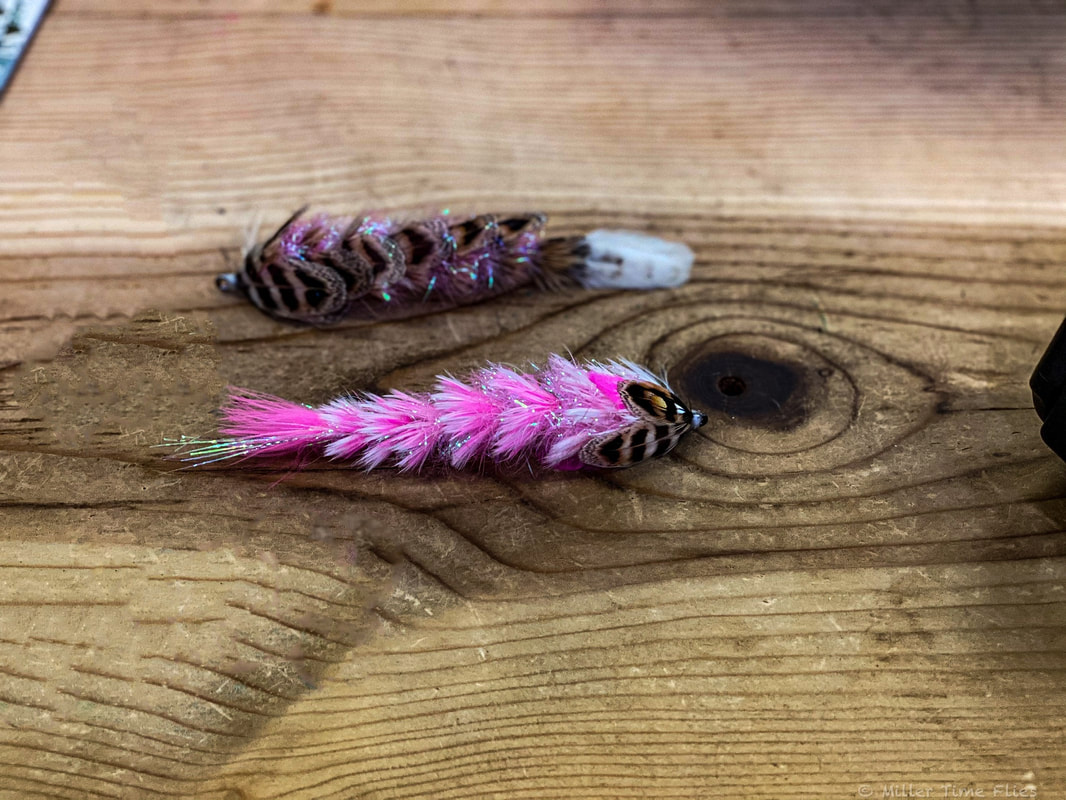




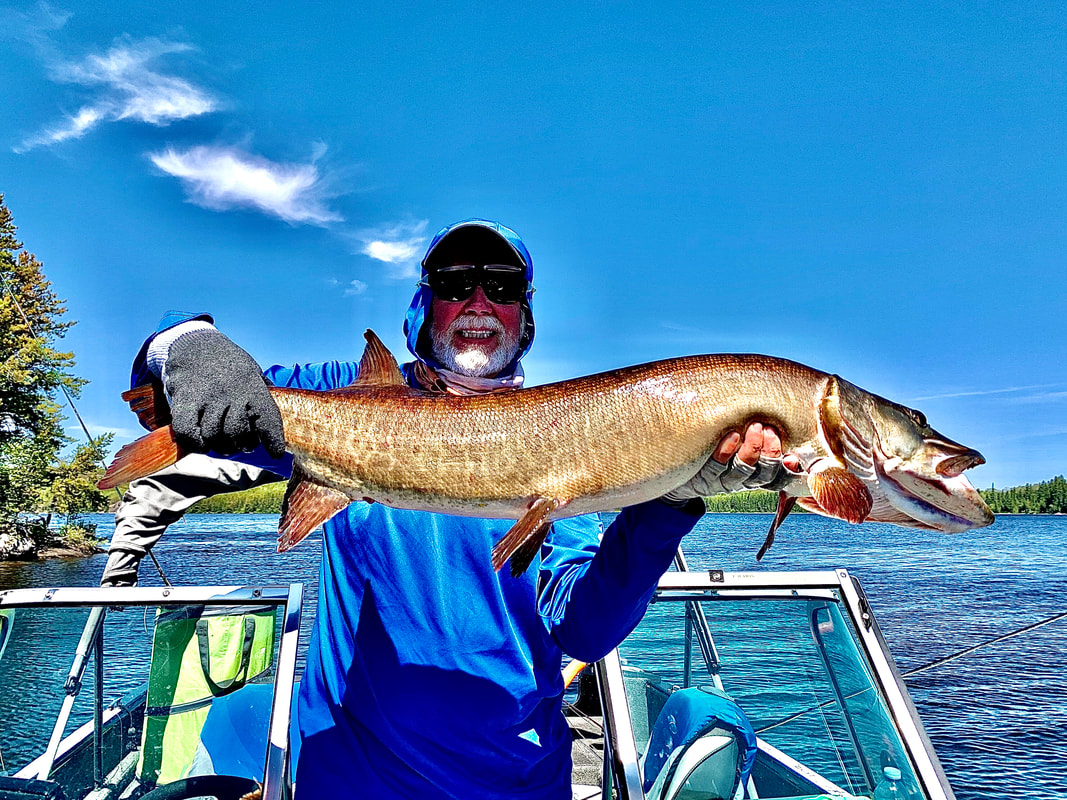
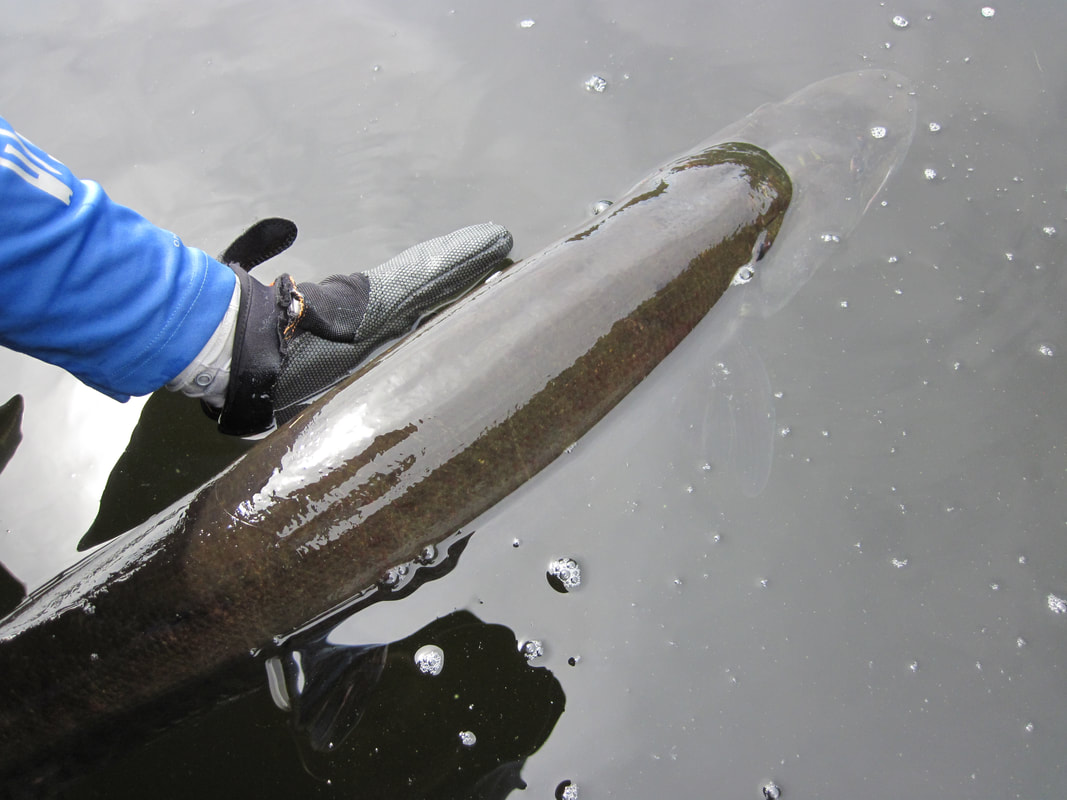
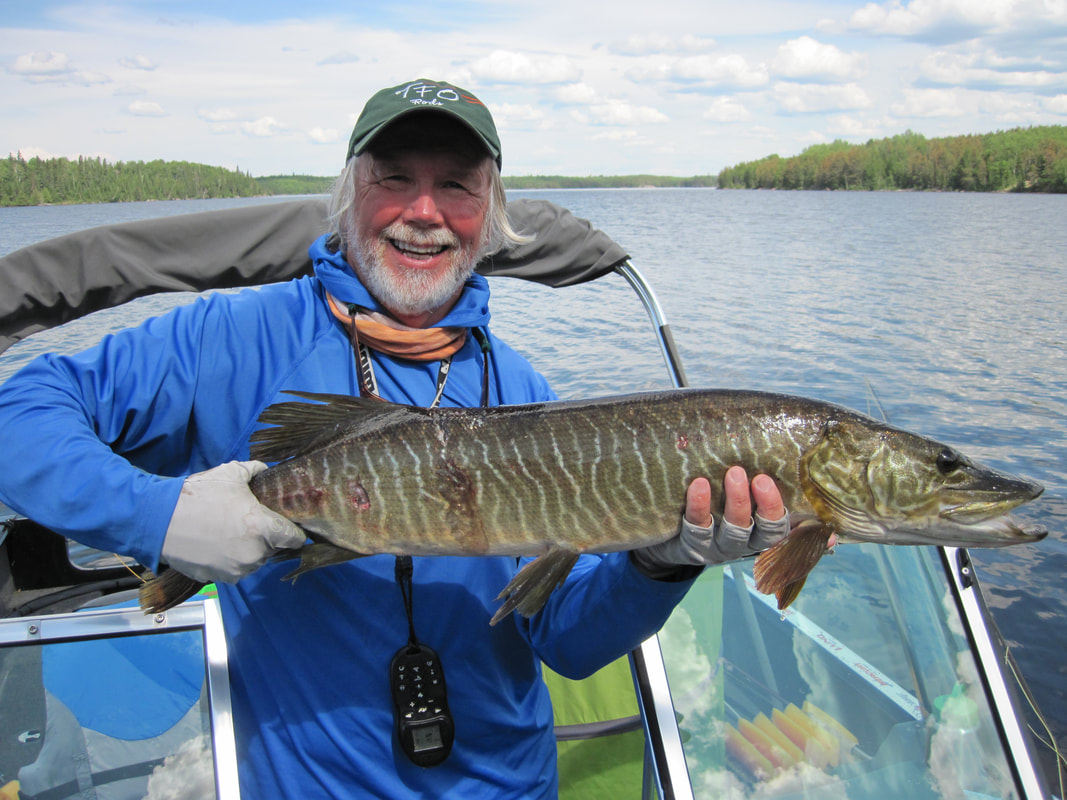


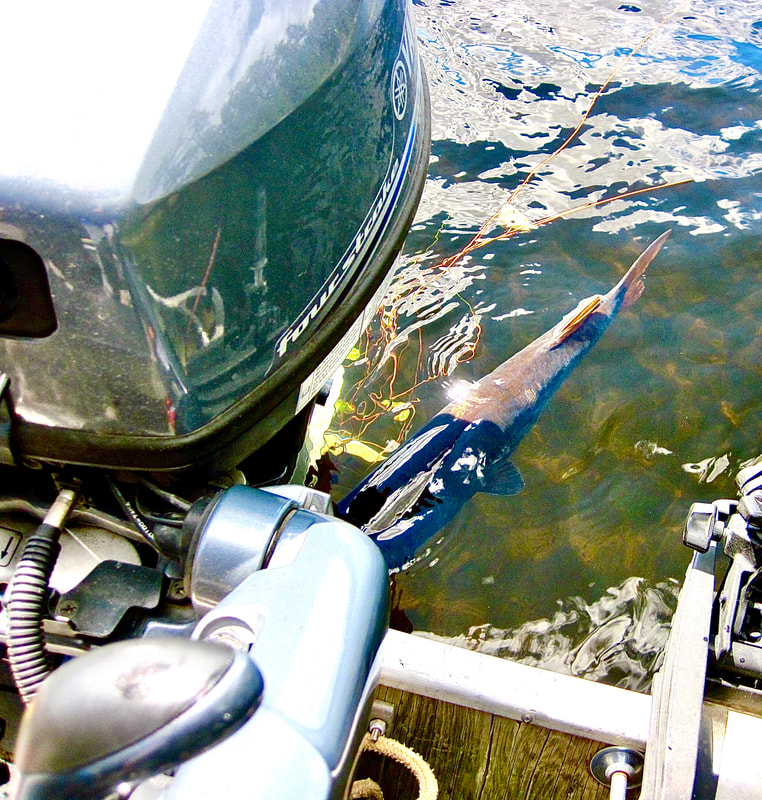
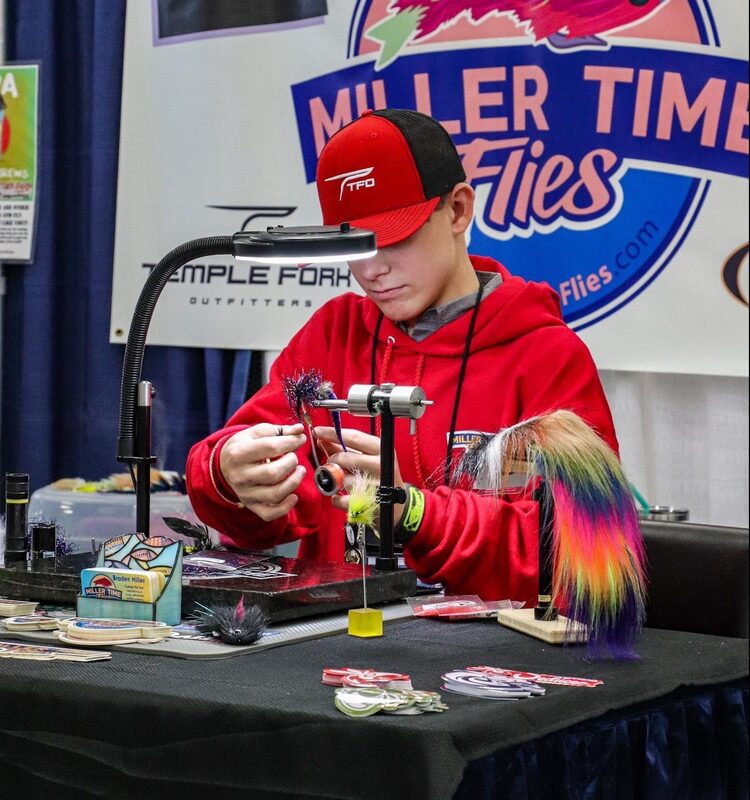




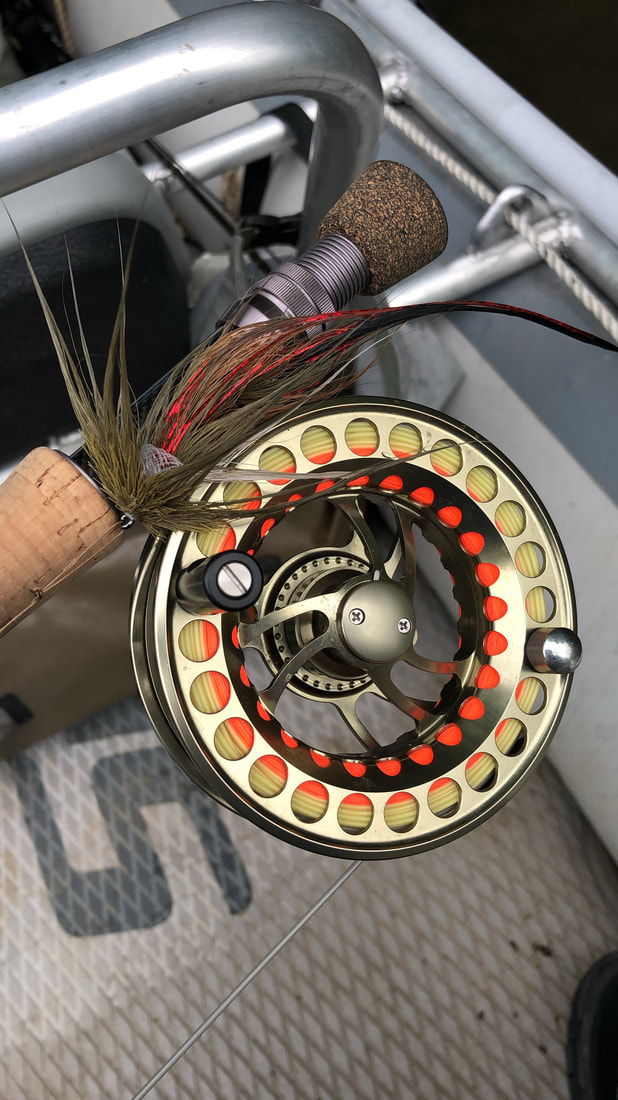




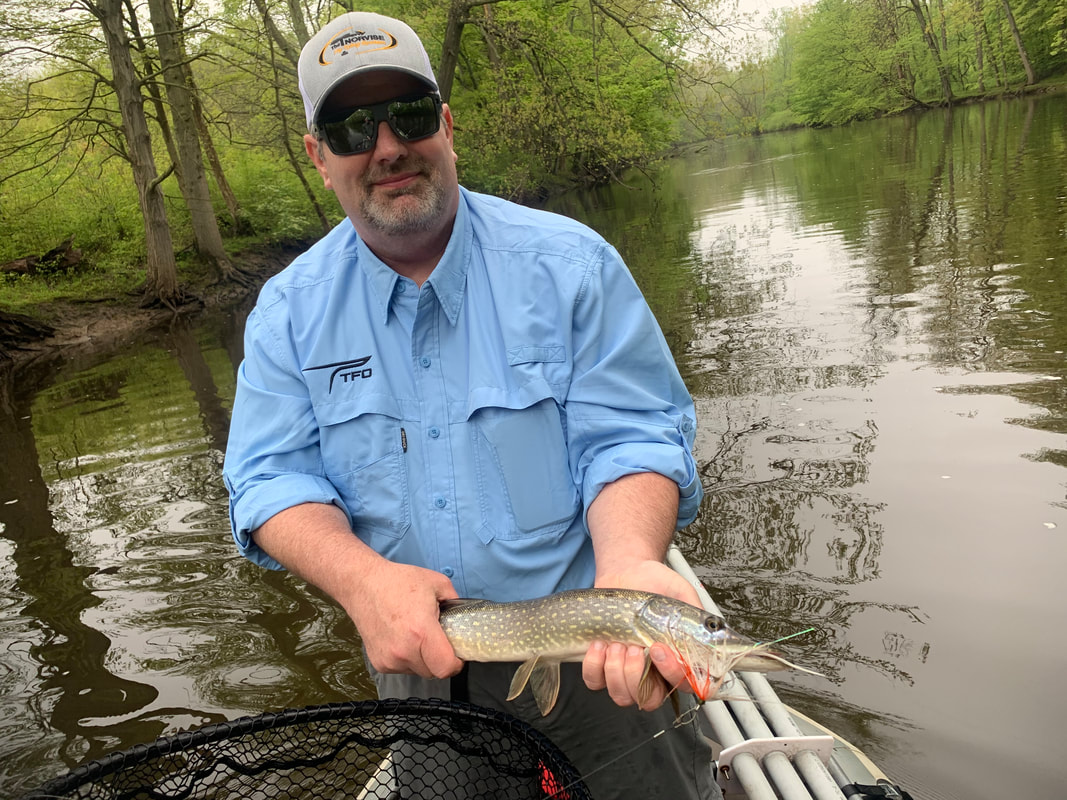

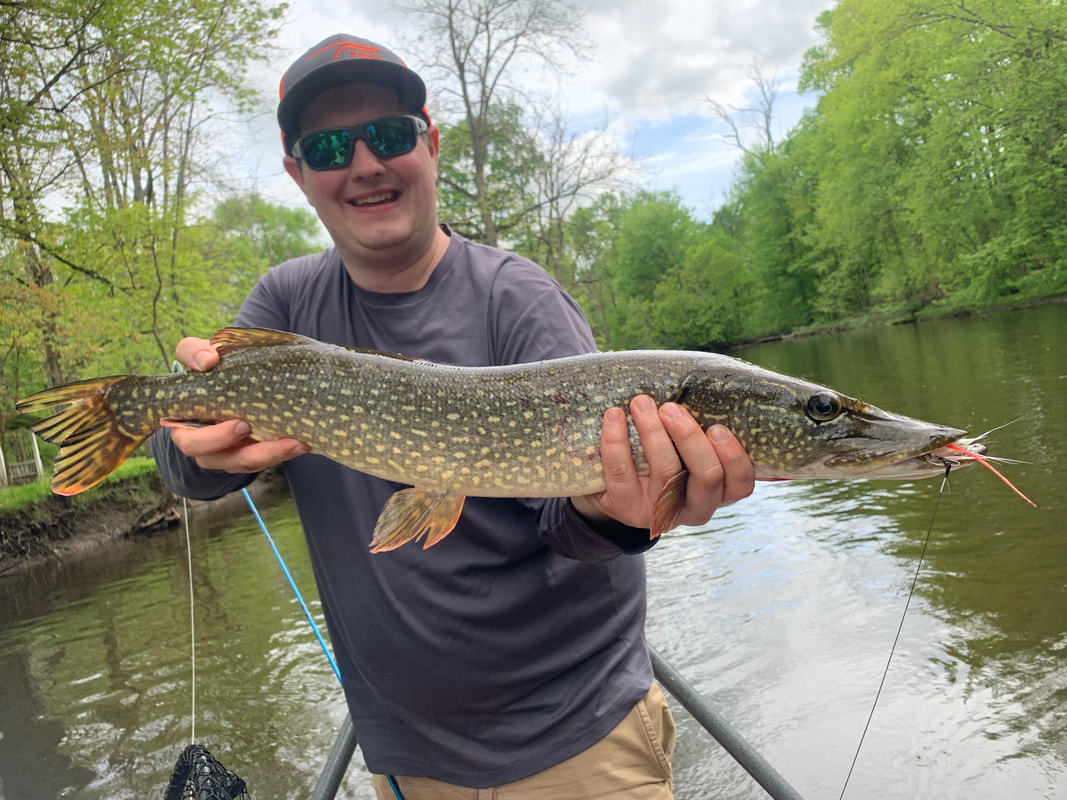



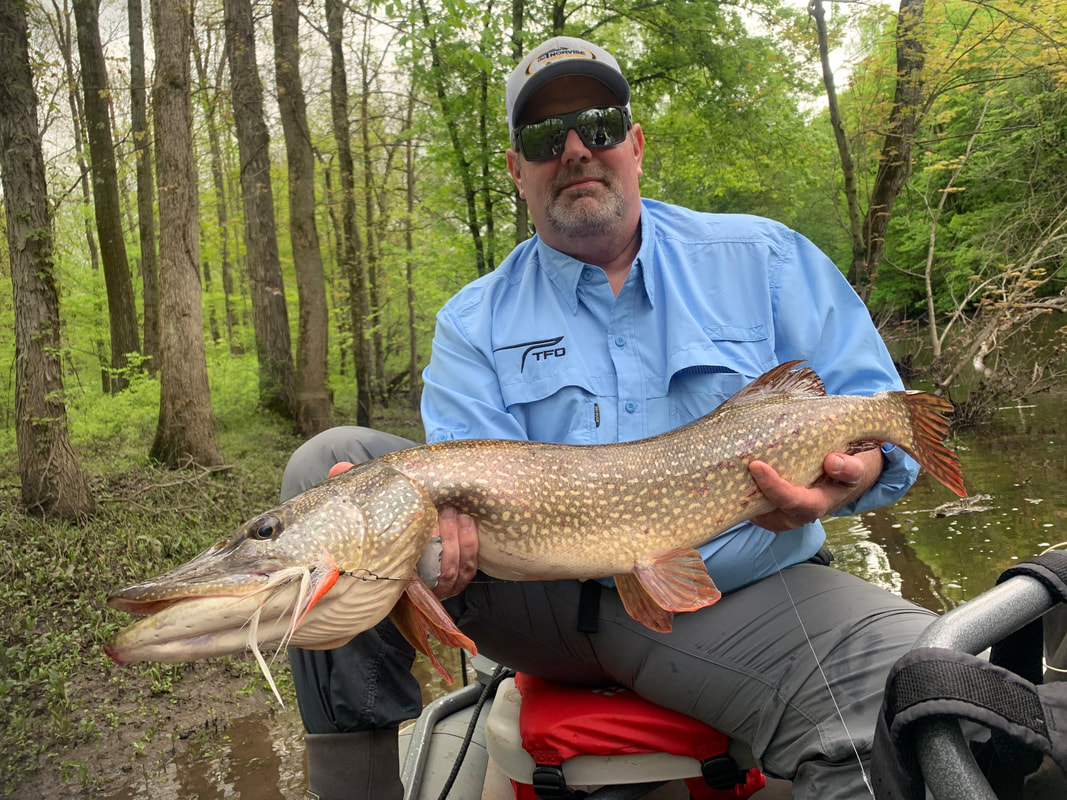
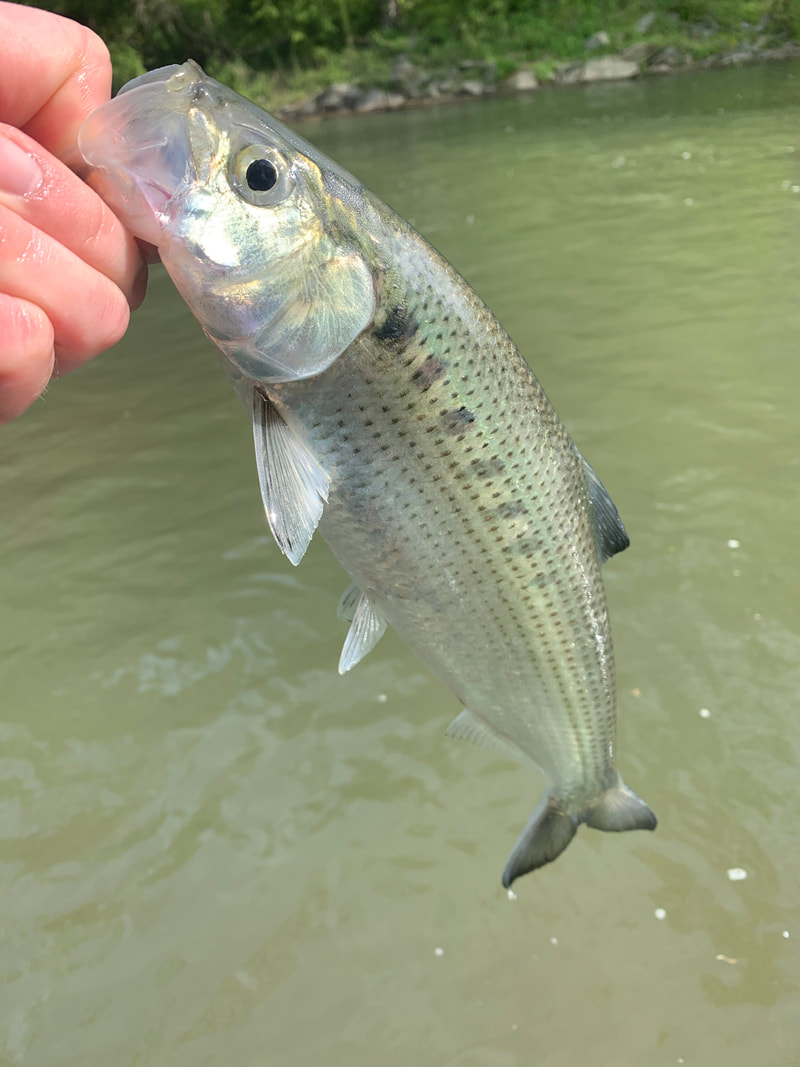








 RSS Feed
RSS Feed
